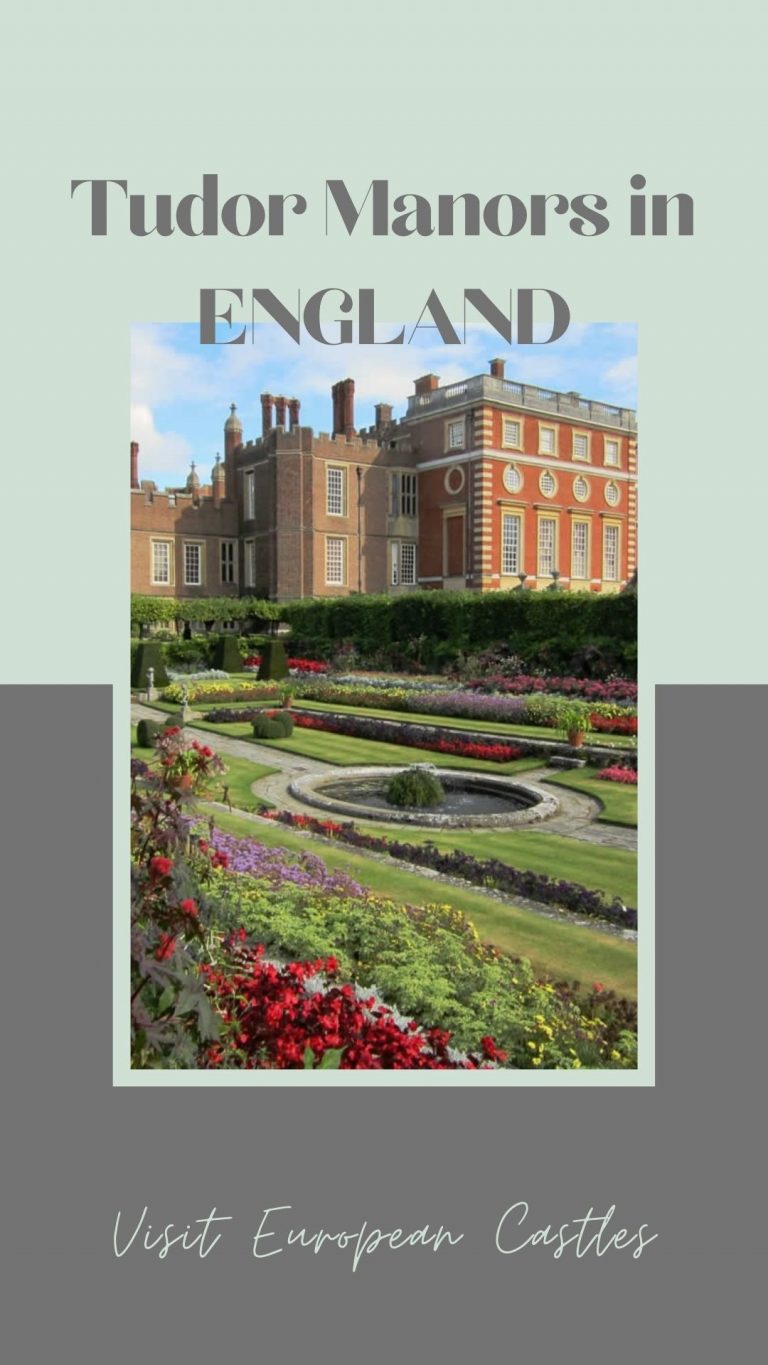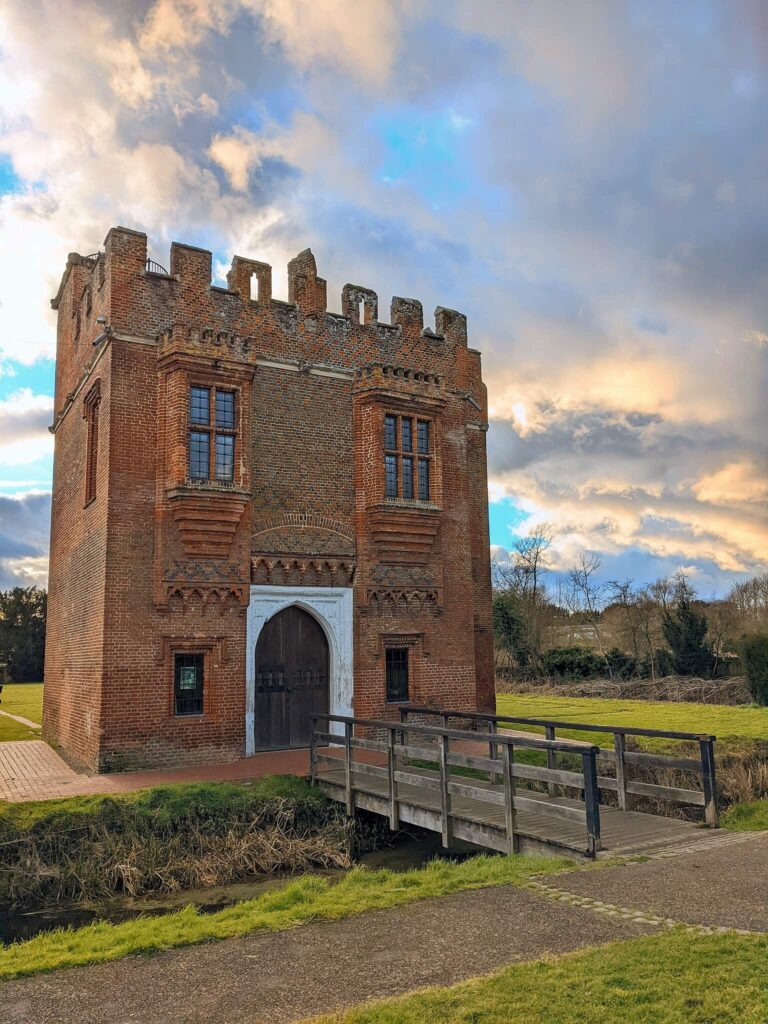The Best Castles and Stately Homes in Essex
Essex is a county in the Southeast of England. It is one of the home counties, a county that surrounds the English capital London. Due to its close proximity to the capital, the castles and stately homes in Essex can easily be visited on a day trip from London.
You can find several Norman castles in Essex that you can visit, as well as the favorite castle of King Edward III. Beisde castles there are also beautiful stately homes in Essex. These historic country houses were visited by royalty and with a visit to one of these houses you will learn more about their fascinating histories.
This post shows the best castles and stately homes in Essex that you can visit.
The Best Castles in Essex

Colchester Castle
Colchester Castle is a Norman castle built by William the Conqueror. The castle was built on top of the Roman Temple of Claudius. The Norman Keep is mostly intact and is the largest Norman Keep in Europe.
In the 17th century, the curtain walls and the upper part of the keep were demolished. The castle became a prison and large garden pavilion. Today, the castle houses the Colchester Museum which shows an important collection of Roman exhibits.
Colchester Castle visitor information: the castle & museum is open daily. Visit the website for opening hours.
Hadleigh Castle
Hadleigh Castle was built in the early 13th century by Hubert de Burgh overlooking the Thames Estuary. Since its construction, the castle was an important economic and defensive structure. King Edward III greatly expanded and refortified the castle. Mainly to defend the castle against an attack by the French in the Hundred Years War. But Hadleigh Castle also became a favorite royal residence of the king as it is located close to London.
The castle eventually fell into ruin, but the romantic ruins overlooking the Essex marches can now be visited.
Where: Hadleigh
Built: 1215
Visitor information: the castle is owned by English Heritage. Visit the website for more information.

Hedingham Castle
Hedingham Castle is the best preserved Norman keep in England sitting on a hill above the village. The grounds originally featured a castle with outbuildings that were built in 1100. The keep was built some 40 years later and is the only building that has survived.
The castle and the Keep were built by the De Vere family (who later would become the Earls of Oxford). The Keep is now privately owned by the Lindsay family who are descendants of the Earls of Oxford.
The keep and the landscaped gardens are now the hosts of events and weddings. But you can also tour the keep and the grounds.
Where: Castle Hedingham
Built: 12th century
Style: Norman
Visitor information: the castle is open to visitors. Visit the website for more information.
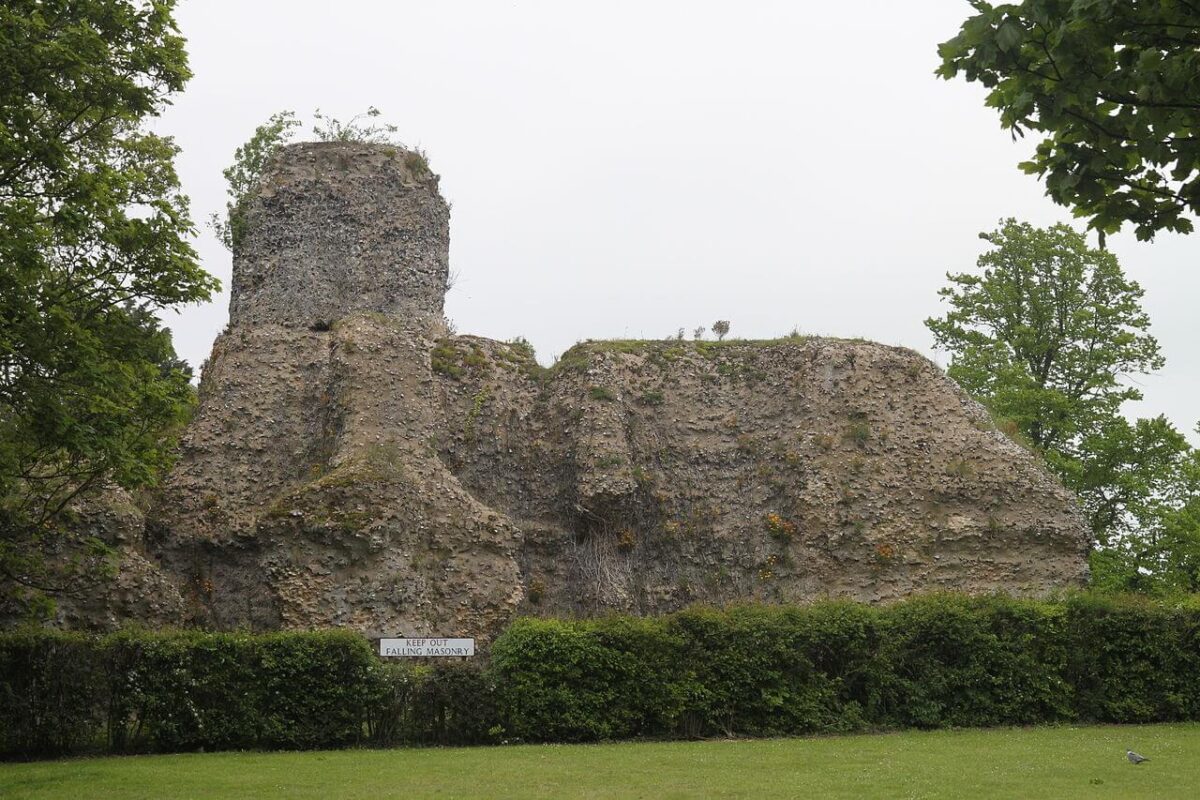
Walden Castle
Walden Castle is a ruined medieval castle that was built during the civil war in England and Normandy called The Anarchy. The castle was built by Geoffrey de Mandeville, 1st Earl of Essex, between 1141 and 1143, who built several castles in the region.
Only the ruined core of the building remains as most of the stones were stolen over the centuries.
Where: Saffron Walden
Built: 12th century
Visitor information: the castle is open to visitors. Visit the website for more information.
The Best Stately Homes in Essex

Belchamp Hall
Belchamp Hall is a historic country house overlooking the valley of the Belchamp Brook towards Bulmer village. The house was built around 1710 in Queen Anne Style, replacing an earlier Tudor house. Inside, there are Elizabethan and Jacobean wall paneling that are presumably from the old house.
The site has been owned by the Raymond family since 1611 and it’s still their family home. Belchamp Hall is best known for featuring as “Felsham Hall” in the television series Lovejoy.
Where: Belchamp Walter
Built: 1710
Style: Queen Anne
Visitor information: private tours can be arranged on the website. The estate also offers holiday accommodation. Visit the website for more information.

Hylands House
Hylands House was built around 1730 as a brick Queen Anne-style manor house. The Hylands Estate had many owners and during the Victorian times the house was at its largest with two extra wings and a white neoclassical exterior.
The last private owner, Mrs Christine Hanbury, died in 1962. The house and grounds were bought by the Chelmsford Borough Council who have restored the estate to its Victorian splendor.
Hylands House is also used as a film location, featuring as The White House in The Crown and Chasing Liberty.
Where: Chelmsford
Built: 1730
Style: Neoclassical
Visitor information: the house and grounds are open to visitors. The estate also houses workshops and events. For more information visit the website.
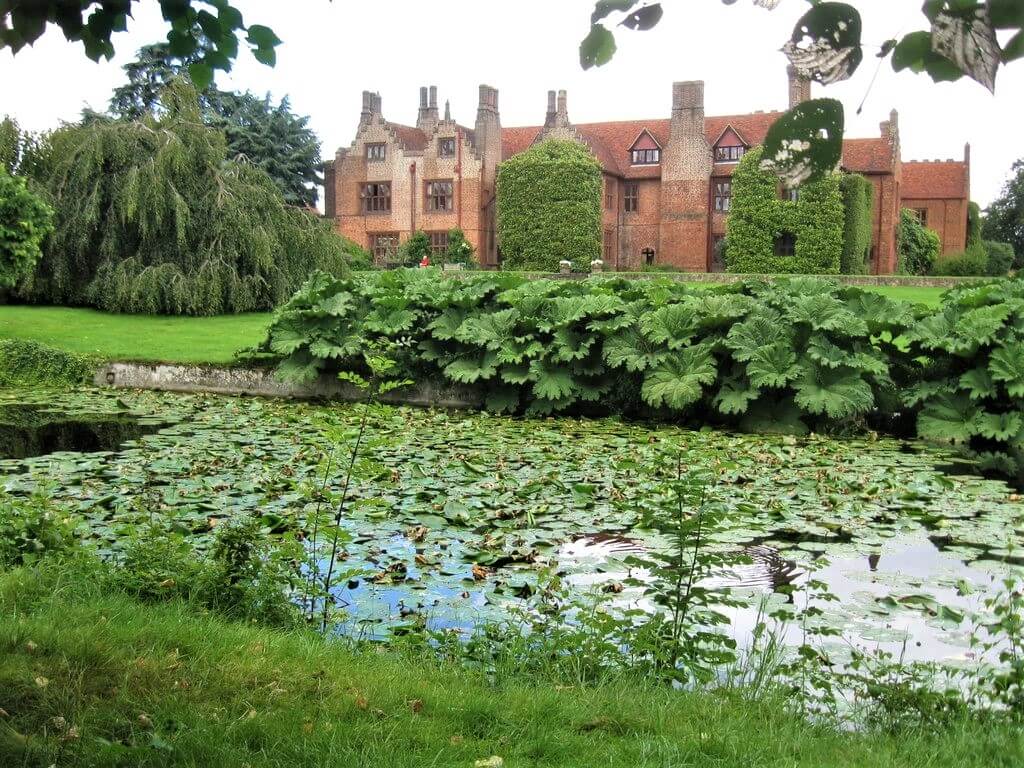
Ingatestone Hall
Ingatestone Hall is a Tudor manor house in Essex. The 16th century house was built by Sir William Petre (Secretary of State to Henry VIII, Edward VI, and Queen Mary I), and his descendants still live at Ingatestone Hall. In 1561, Queen Elizabeth I stayed at Ingatestone Hall.
The Petre family is Catholic and they sheltered a number of Catholic priests at Ingatestone. And the manor house has two priest holes.
Ingatestone Hall is the location of Mary Elizabeth Braddon’s novel Lady Audley’s Secret. The Victorian novelist was inspired to use the hall after she stayed there. The exterior of the hall is also used in the BBC adaptation of Bleak House.
Where: Ingatestone
Built: 1539-1556
Style: Tudor
Visitor information: the house is open to visitors. Visit the website for more information.
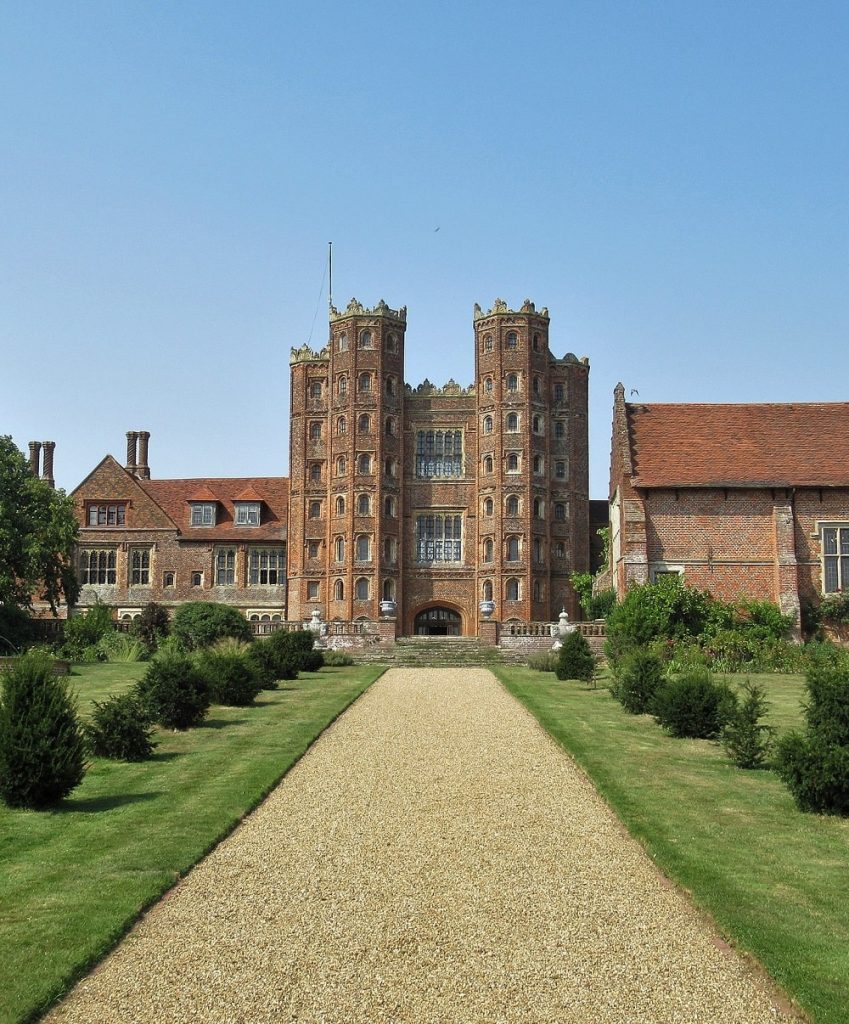
Layer Marney Tower
Layer Marney Tower is a Tudor gatehouse in Essex looking out over the River Blackwater. The palace was built in 1520 and it is one of the finest examples of a Tudor gatehouse. And it is also the tallest Tudor gatehouse in England.
Where: Layer Marney
Built: 1520
Style: Tudor
Visitor information: the gatehouse, church, and garden are open to visitors. Visit the website for more information.
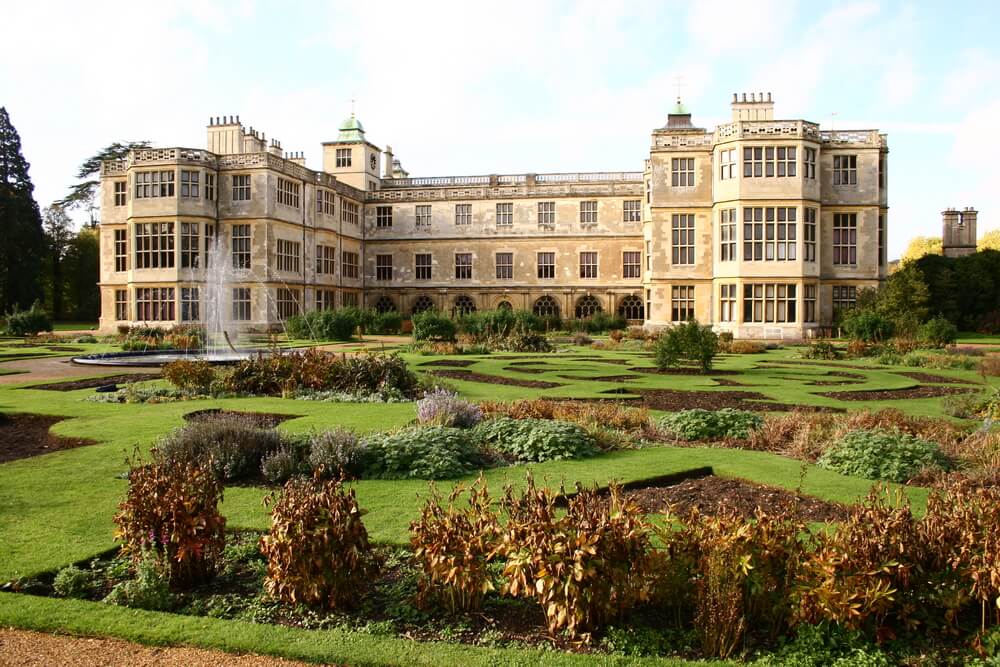
Audley End House
Audley End House is a grand stately home in Essex that is considered to be one of the finest Jacobean prodigy houses in England. The 17th century country house is the family seat of the Barons Braybrooke.
The house is now only one-third of its original size, but even so, it is still a grand country house that resembled Hatfield House in Hertfordshire. The grand mansion features a Victorian kitchen and servants’ wing, state rooms, stables, a kitchen garden, and award-winning gardens that were designed by Capability Brown.
During the Second World War, the house was used to train Polish Resistance soldiers. A memorial to these soldiers stands on the grounds.
Where: Saffron Walden
Built: 17th century
Style: Jacobean
Visitor information: the house and garden are open to the public. Visit the website for more information.

Paycocke’s House and Garden
Paycocke’s House and Garden are a Tudor merchant’s house in Essex which is one of the few merchant’s houses from that time to have survived. The house was built for Thomas Paycocke, a wealthy businessman and artisan in the 15th century.
The house was almost destroyed in the 19th century, but Lord Noel Buxton restored the house and its many carvings in the early 20th century. The gardens are restored in Arts and Crafts style.
Where: Coggeshall
Built: 15th century
Style: Tudor
Visitor information: the house and garden are owned by the National Trust. It can be visited through a guided tour. Visit the website for more information.
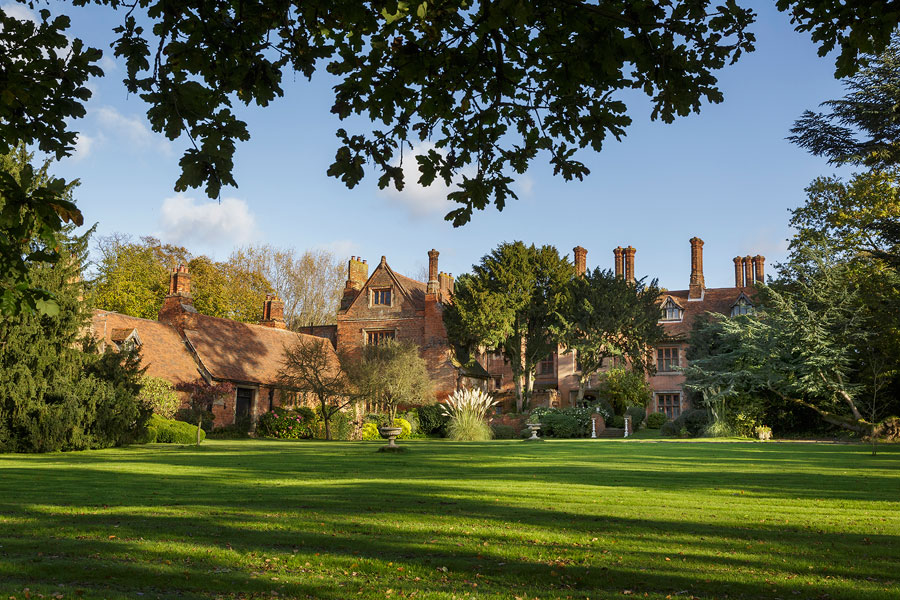
Creeksea Place
Creeksea Place is an Elizabethan manor house that is famous for being used as a film location for BBC’s Great Expectation. The historic house was built in 1569 and the story goes that Queen Elizabeth I once stayed at the manor.
Since the 1940s, the house has been the home of the Bertorelli family. Since 2004, the house has been opened up to the public hosting weddings, events, open days, and history tours.
Where: Burnham-on-Crouch
Built: 1569
Style: Elizabethan
Visitor information: the house is open to the public. Visit the website for more information.
Country House Hotels in Essex

Down Hall
Down Hall is a Victorian country house in Essex that has been turned into a four-star country house hotel. The house was built on the site of an earlier Tudor house that was owned by the poet Matthew Prior. The house was rebuilt in the 1860s in its current Elizabethan style.
The Victorian country house was turned into a country house hotel, spa, and estate in the 20th century. The hotel is surrounded by 110 acres of woodland, parkland, and landscaped gardens.
Down Hall hotel was also the film location for The Great British Bake Off in 2020 and 2021.

